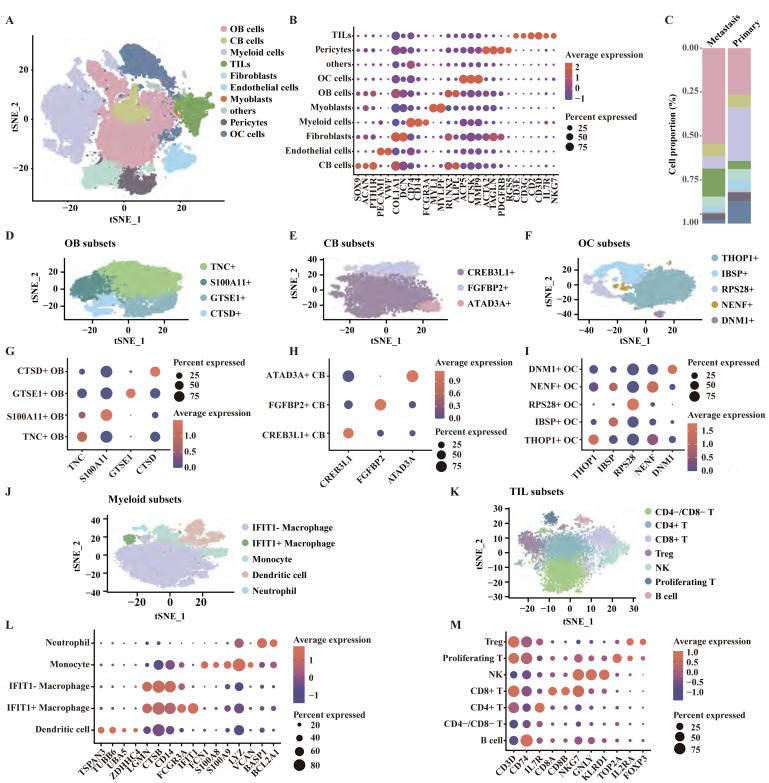
GTSE1-expressed osteoblastic cells facilitate formation of pro-metastatic tumor microenvironment in osteosarcoma


Understanding metastatic osteosarcoma relies on defining the complexity of cell types, their associated molecular profiles, and interactions among cells in the tumor microenvironment. Here, we integrated single-cell and bulk gene expression datasets and revealed that metastatic lesions were highly enriched for GTSE1+ osteoblasts (OB). Under the regulation of E2F family members, GTSE1+ OB cells harbored enhanced proliferation activity and high differentiation potential. Augmentation of GTSE1 enhanced the abilities of cell migration and invasion, while silencing of GTSE1 impaired the abilities in human OB cell lines. Furthermore, cellular communication analysis showed the cross-talk between GTSE1+ OB cells and CD8+ T cells in metastasis was achieved through the MIF-(CD74-CXCR4) pair. Spatial transcriptomic data revealed that MIF-CD74 and CXCR4-MIF/CD74 showed a higher positive correlation in undifferentiated pleomorphic sarcoma than leiomyosarcoma. Correlation analysis unveiled that GTSE1+ OB cells and monocytes were the negatively correlated populations at the single-cell level, a finding validated in 4 independent osteosarcoma datasets comprising 226 samples. Our findings suggest that GTSE1 overexpression serves as a potential biomarker for metastasis in osteosarcoma and provides a promising strategy to prevent metastasis by targeting GTSE1+ OB cells.
